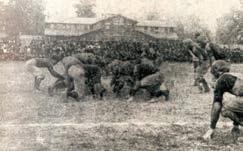
3 minute read
Historical Timeline
A HISTORY of LITTLE GIANT STADIUM
Baseball was the first sport played on campus. In this view from the 1870s, the diamond is seen in the upper left corner of campus, roughly the spot where Little Giant Stadium stands today.

1870s 1904
Scene from the Wabash-IU game from 1904.
post-WWI
An undated photo of the first-ever bleachers, which were erected post-World War I. During this time, the field was oriented north to south. The house pictured behind the bleachers sat on Crawford Street and was torn down to build the Allen Center. It sat about where the west end of the Knowling Fieldhouse is today.
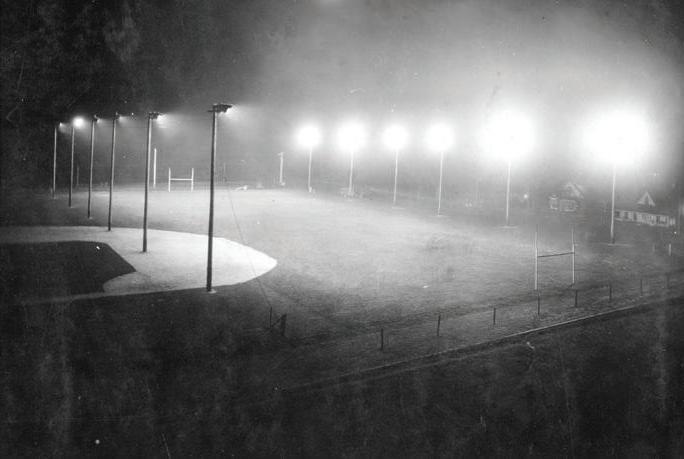

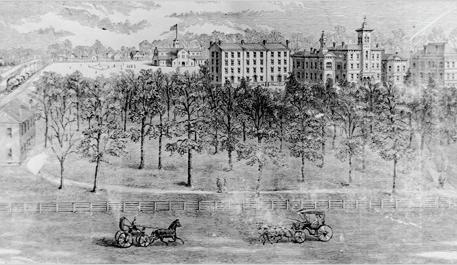
Photo of the 1903 Wabash football team. Pictured third from the left is William M. Cantrell of Danville, Illinois, Wabash College’s second Black player. 1903
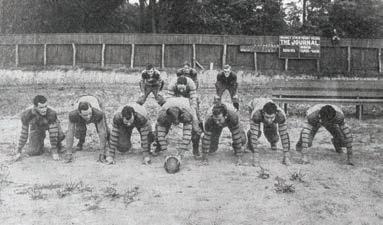
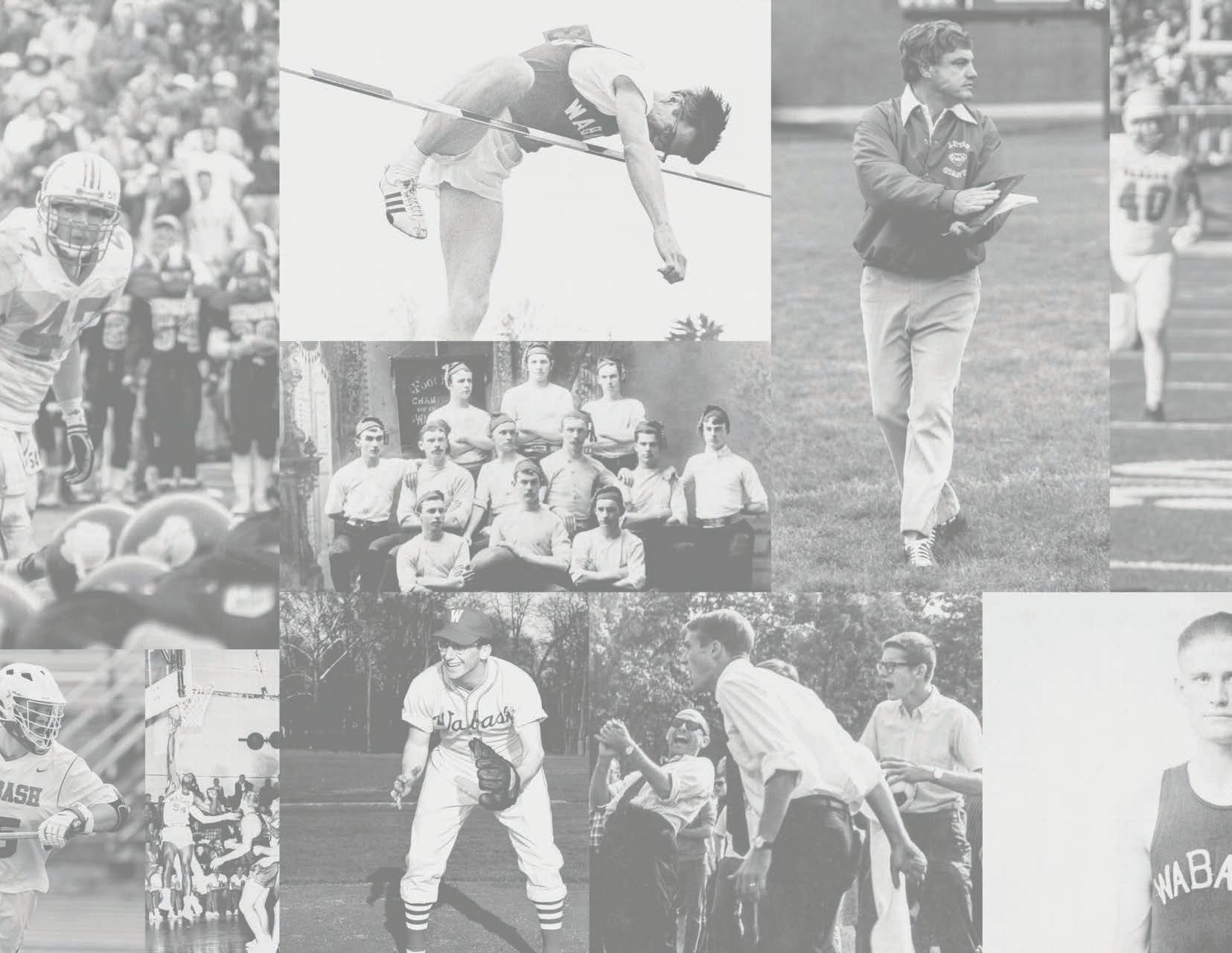
1908
The Little Giants of 1908 on Philistine Field, so named for its disreputable appearance. As seen, there are 11 players pictured and no grass.
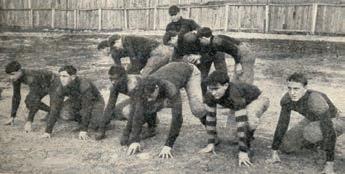
1923
Game action from 1923. Note Lee Norman “Pete” Thorn [W1924] is playing without a helmet. Thorn was the only Wabash man to earn 16 varsity letters in his college career and received the John Maurice Butler Prize given to that senior with outstanding scholarship and character. In 1929, Athletic Director Harry Scholler was determined to light the field for night football, an experiment that had worked well in the states west of Indiana. The lighting experiment was successful. The first game or two to be played at night attracted sufficiently large crowds, mostly due to the novelty. As the season went on and the weather grew colder, it became a chore for all but the most eager lovers of football to stay out in the damp cold of an autumn night.
1929
Game action from the Wabash-Butler game of 1939 at Ingalls Field. 1939

Ingalls Field (1928–53) ran parallel to Crawford Street. This photo shows pregame warmups from a game there in 1951.
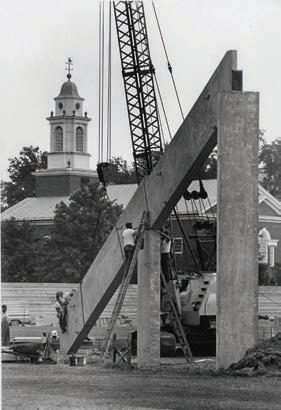
1928–53 1960s
Construction continues on Little Giant Stadium in the mid-1960s as the grandstand supports rise from the ground. Pioneer Chapel looms in the background. A rendition of Little Giant Stadium used at the facility dedication in 1966. From The Bachelor on October 7, 1966, “The 4,200-seat stadium, which looks down on historic Ingalls Field, is the anonymous gift of a Wabash benefactor who donated most of the $165,000 needed to make the permanent stands a reality. Outstanding features of the stadium include an all-weather press box and bright scarlet seats to match the college colors.”
1966
The first artificial turf playing surface at Hollett Little Giant Stadium was dedicated to the memory of David Hunter Sewell ’76 and named Sewell Field from 2010 to 2019 through the generosity of Gary ’77 and Joanne Reamey.
2010
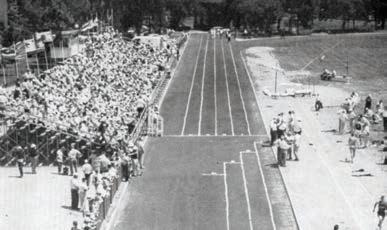
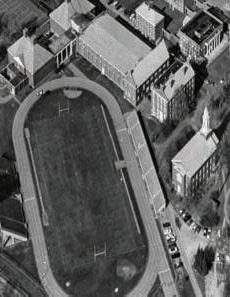
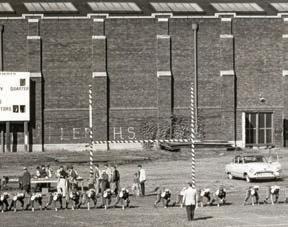
1956

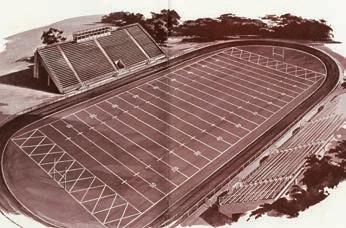
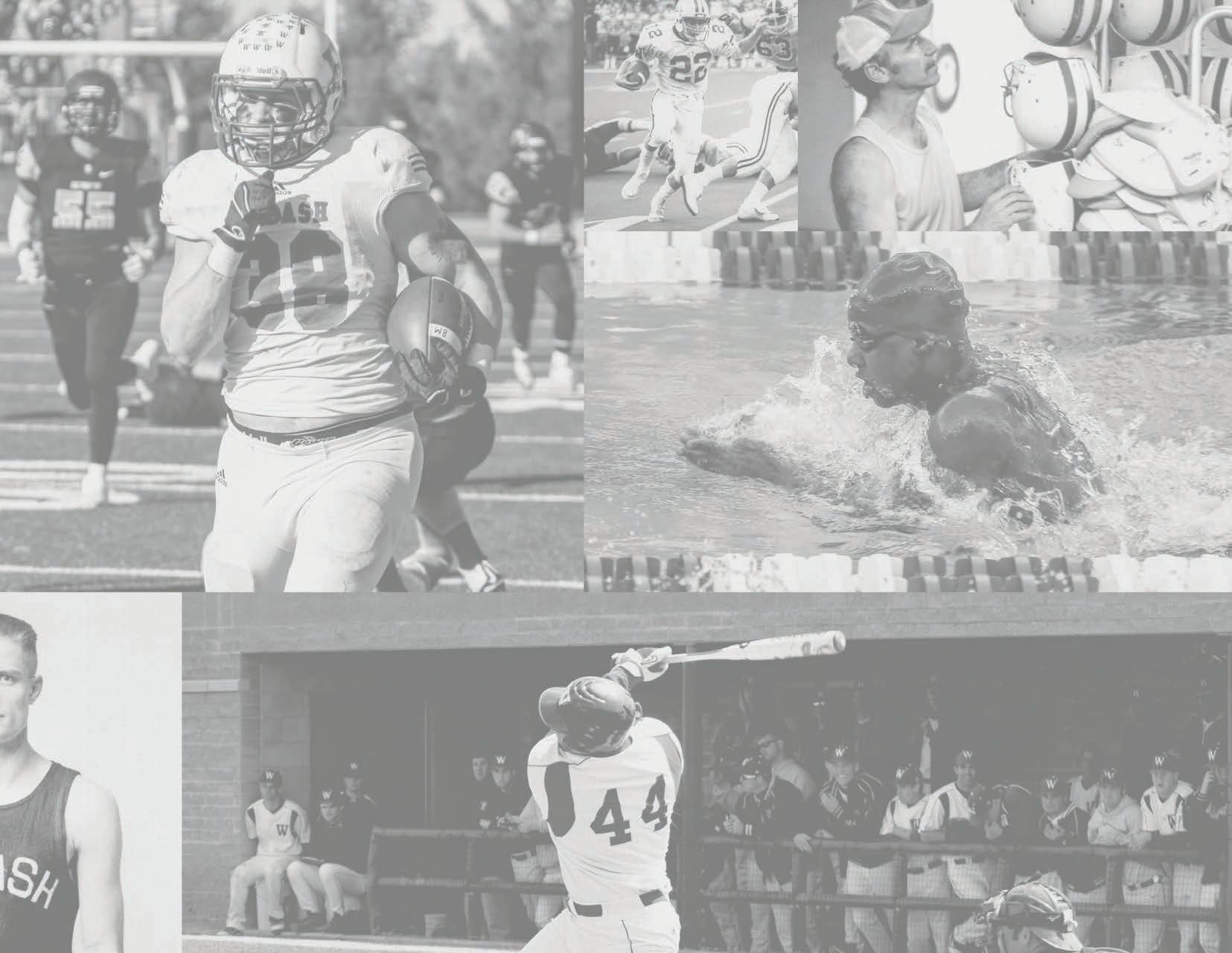
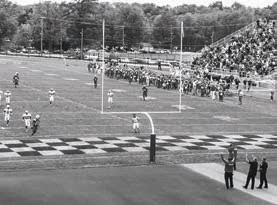
Wabash College hosted the 1956 U.S. Olympic Decathlon Trials on June 13–14. Rafer Johnson and Milt Campbell finished 1-2 in the event. Campbell went on to win gold at the Olympics in Melbourne, while Johnson won gold in the event in Rome in 1960. Bleachers are installed in the main seating area of Little Giant Stadium in 1966, as construction of the McCanliss Athletic Center continues in the background. Photo from The Bachelor. 1966
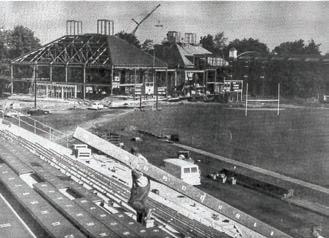
late 1960s
Aerial photo taken in the late 1960s. The new stadium was dedicated in 1966. The McCanliss Athletic Center [top] was dedicated in 1968. On Sept. 26, 1998, Wabash’s former stadium was dedicated in honor of Byron P. Hollett ’36, trustee of the College for three decades and President of the Board of Trustees from 1975–84.
1998
Little Giant Stadium and Frank Navarro Field Dedication Saturday, September 18, 2021




